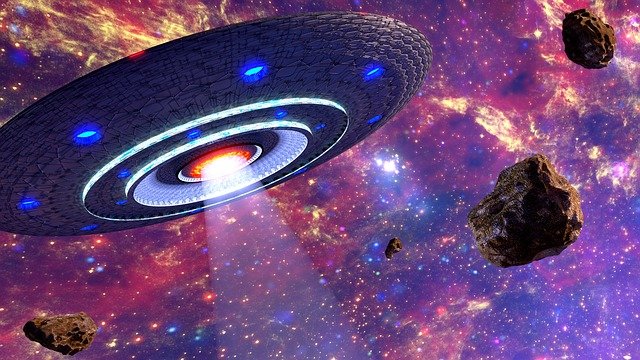In the past, UFO programs have been more science fiction and less hard science. Now with better telescopes, brighter computers, and advances in theoretical physics, we can tackle the most profound questions in astronomy and perhaps in all of human history: Are UFOs real? and Are we really alone?

Some theories we debunk. Aliens with advanced technology and energy sources could have been on Earth in the past. But their presence is not required to explain the accomplishments of our ancestors, like Stonehenge, the Pyramids of Egypt, or the structures of Mesoamerica. These achievements are not evidence of aliens on Earth, but of the very human traits that now compel us to build giant telescopes to look for companionship in the cosmos.
There are definitely objects in the sky that we cannot identify, ranging from clever hoaxes to Venus, clouds, birds, and planes in unusual conditions. Unidentified Flying Objects or UFOs are real. Astronomers and pilots have definitely witnessed real UFOs, but we have no proof that aliens are behind the wheel.
We’ve not given up on finding Martians, but they will be very small, not the invaders of HG Wells. As exciting as Mars is, it will not provide intelligent companionship. We are really alone in our solar system and must look to other stars for planets harboring intelligent life.
Recently we discovered two objects that came from beyond our solar system: Oumuamua and Comet 21/Borisov. From them we know that the chemistry for life exists beyond Earth and life-bearing worlds are likely among the thousands of extrasolar planets we have discovered.
Kepler-452b, for instance, is an Earthlike planet, orbiting a sunlike star, in its habitable zone where liquid water can exist. It’s a rocky world, 60 percent larger than Earth. Its year is 385 Earth days long and its parent star is roughly 6 billion years old. This planet has spent 6 billion years in the habitable zone of its star — over a billion years longer than the Earth required to develop intelligent life.
Perhaps the most interesting star system has four exoplanets that could see Earth as we pass in front of the sun. Imagine watching these distant planets moving in front of their star, knowing that they could also harbor aliens watching us!
Proxima Centauri, with two orbiting planets, is the closest star to Earth. Proxima Centauri b is in the habitable zone and just over four light-years from Earth. In the 21st century, we might send a tiny laser-powered probe to visit this world. The proposed mission, called Starshot, could reach Proxima Centauri b in just 20 years, using a spaceship the size of a computer chip, a reflecting mirror stronger than any we have now, and the largest laser ever created.
In this century scientists have begun to question the limitation of light speed. Without violating any laws of physics, we could travel faster than light, if we warped space-time itself. Our ship would bend space inward in front of us and expand it behind us, creating a bubble around us in space-time. The spacecraft itself would be stationary as the surrounding bubble moved through space-time. The physics works, but the amount of energy required to create and sustain this space-time bubble equals the entire annual energy consumption of the United States.
Are we really alone? If there is a powerful energy source as magical to us as electricity would have been to our ancestors, then UFOs powered by advanced aliens are possible. Otherwise, the universe could be filled with intelligent aliens like us – searching for enough energy to leave home. Perhaps we are alone now, but …. now is not forever!
To explore these topics in a high-resolution full dome adventure, join us in the Burke Baker Planetarium for this summer’s cosmic adventure: “Are We Really Alone?”






